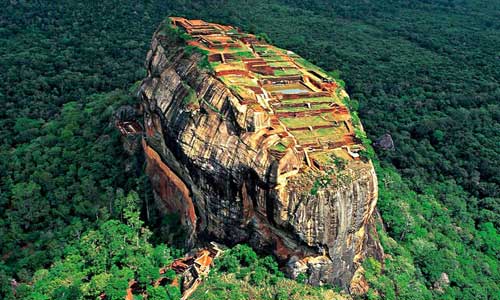Sri Lanka Experiences - Sigiriya Rock Fortress

Places
Sigiriya, Cultural Triangle

Sigiriya or Sinhagiri Lion Rock is an ancient rock fortress located near the town of Dambulla in the Central Province, Sri Lanka. The name refers to a site of historical and archaeological significance that is dominated by a massive column of rock nearly 200 metres (660 ft) high
According to the ancient Sri Lankan chronicle the Culavamsa, this site was selected by King Kashyapa (477 – 495 CE) for his new capital. He built his palace on the top of this rock and decorated its sides with colourful frescoes. On a small plateau about halfway up the side of this rock he built a gateway in the form of an enormous lion. The name of this place is derived from this structure — Sīnhāgiri, the Lion Rock. The capital and the royal palace was abandoned after the king’s death. It was used as a Buddhist monastery until the 14th century.[1] Sigiriya today is a UNESCO listed World Heritage Site. It is one of the best preserved examples of ancient urban planning.
The famous wall paintings in Sigiriya can be treated as displaying about the Sinhala Land i.e. Sri Lanka. The Ravana Watha explains that the picture of blue coloured lady represents the Yakka Tribe and other ladies represent the Tribes of Nāga (Serpentine), Deva (Divine) and Gandabhbha (Celestial Musicians) and the beautiful flowers show the unity of the country. In 477 CE, Kashyapa I, the king’s son by a non-royal consort, seized the throne from King following a coup. Afraid of an attack, Kashyapa moved the capital and his residence from the traditional capital of Anuradhapura to the more secure Sigiriya.
The Sigiriya site contains the ruins of an upper palace located on the flat top of the rock, a mid-level terrace that includes the Lion Gate and the mirror wall with its frescoes, the lower palaces located behind the lavish lower gardens, and moats and ramparts which protected the citadel. The site was both a palace and a fortress. The upper palace on the top of the rock includes cisterns cut into the rock. Sigiriya is considered to be one of the most important urban planning sites of the first millennium, and the site plan is considered very elaborate and imaginative.



